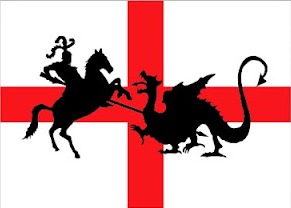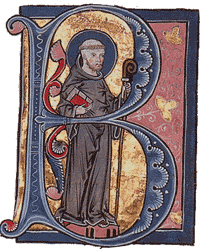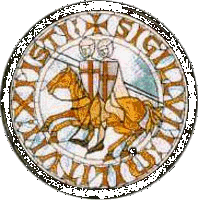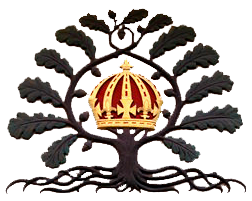A Further Response to William Witt on "In Persona Ecclesiae"
 Embryo Parson Posted on
Embryo Parson Posted on  Thursday, July 23, 2015 at 04:40PM
Thursday, July 23, 2015 at 04:40PM In answer to those many Anglican folks in ACNA and elsewhere who seem to believe that William Witt has spoken the last word on the question of women's ordination to the priesthood, I noted here that it's far from the last word on the matter. As one example from Anglican circles, I've referenced this article and combox discussion from the the Anglican Continuum as an example of how opposition to Witt's arguments, specifically to his notion that the president at the Eucharist stands in persona ecclesiae, is shaping up. Today I found this article and combox discussion at a Roman Catholic blog. Here is the text of the blog entry by "Fr. J" and salient quotations from the comments section:
Recently, Professor William Witt, an Episcopalian, has introduced a novel argument in favor of Women’s Ordination.
Historically, Orthodoxy has held that the priest acts in persona ecclesiae (in the person of the church), and that consecration takes place through the epiclesis.
Historically, the Western Church has held that the priest acts in persona christi, and that consecration takes place at the words of institution.
In ecumenical discussions/debates, this difference has long been a point of contention between East and West, with the East insisting that their position is correct, and that the West’s position is seriously mistaken. In ecumenically agreed statements, the eucharistic model that has come to dominate in the last half century is the epicletic one, without explicit acknowledgment that this is a move toward the Eastern position.
During the second half of the twentieth century (and, to my knowledge, not before), Roman Catholic theologians began arguing that women could not be ordained because they could not represent Christ, i.e., could not act in persona christi.
Shortly afterward, Eastern Orthodox theologians who were opposed to WO, suddenly began adopting the Latin argument about women being unable to represent Christ, without acknowledging that this was yielding to a Latin understanding of consecration that they had fiercely resisted previously.
AFAIK, no one has ever argued that men cannot be ordained because a man cannot represent the female church when the priest acts in persona ecclesiae. So, when arguing for ecumenical unity, Western theologians have increasingly adopted the Eastern model, with an endorsement of the epiclesis, and, by implication, an endorsement of the Easern position that the priest acts in persona ecclesiae.
When arguing against WO, the same theologians (and now Eastern theologians) have insisted that women cannot be ordained because they cannot represent Christ, with an implied (or rather explicit) endorsement instead of the Western position, that the priest acts in persona christi.
But, then, logical consistency is not always a strong suit when people are trying to find new justifications for a committed position when the old one clearly will not do any more. As they say, any stick will do to beat a horse.
Here is my response:
There is a clear coupling in the West of the concepts of in persona christi and the words of institution as the central act. The Western understanding binds these two because the consecration refers to “my” body, “my” blood. That is, the priest speaks in the divine first person. This is also true in absolution. “I absolve you…” Again, the divine first person, thus in persona christi.
The Eastern position does not have a corollary necesity between emphasis on the epiclesis and the priest functioning in persona ecclesiae.
The differences between Eastern and Western traditions on Eucharistic theology are matters of emphasis and are not mutually exclusive. Prior to the schism, the differences in emphasis between East and West were well known and were accepted as different but valid. This is clear in that the comprehensive discussions of between East and West currently under way do not include these particularities of Eastern and Western conceptions of Eucharistic theology.
Differences over the formulation of transubstantiation notwithstanding, both systems are recognized by both East and West as valid. Furthermore, they are essentially differences of emphasis. Can not a priest function both in persona christi and in persona ecclesiae simultaneously? Can not the divine action at the Eucharist take place at both the epiclesis and the consecration?
There are two poor assumptions that Witt makes here:
1. That any shift in emphasis on the part of the West from the words of institution toward epiclesis implies a shift from in persona christi toward in persona ecclesiae. While Rome’s system links the two issues, the East does not.
2. If a shift toward an emphasis on in persona ecclesia is occuring at all officially (an I havent seen evidence for that), it is not in any case a denial of in persona christi, as these are complimentary conceptions, not mutually exclusive ones.
In short, my problem with Witt’s argument is the phrase “by implication:”
The argument from in persona christi against WO, still stands as it absolutely must.
Fr. J.
Comments:
Fr. Gregory says:
Fr J,
Prof Witt’s argument you quote above is incoherent. The priest (presbyter) does not act in the name of the Church but of the bishop–who Himself stands in the place of God the Father (and those the historical honorific, “father” for both bishops and priests).
As for his contention that the institution/epiclesis has been a point of contention–he makes the same mistake that any number of converts to either Church seem to make–a reliance on polemics and an ignorance of practice. Yes, certainly there has been, and is, a debate on this point. But, as you point out, a debate (even a polemical one) does not mean a rejection of the validity of the other’s celebration of the Eucharist.
Prof Witt’s argument is simply absurd.
Michael says:
FATHER GREGORY; thank you for your helpful contribution. Perhaps, I am stretching my neck too far, but I will venture to add, hoping for your Imprimatur: the priest’s prayer while the people sing Cherubicon implies that he acts in persona Christi. The prayer is long, moving, and beautiful, and I am sorry that I have to cut it “to the point”. But here is the extract:
“And by the power of Thy Holy Spirit, enable me who am clothed with the grace of the priesthood to…celebrate the sacred mystery of Thy holy and most pure Body and precious Blood…. For onto Thee I come…make these gifts worthy to be offered to Thee, by me, thy sinful servant. For Thou art He that offers and He that is offered.”
Kucharek (Divine Liturgy of St. John Chrysostom) says that this prayer can be traced back to the 8th century Codex Barberini (p. 481). Eight centuries later the doctrine was adopted by the Council of Trent in its Decree on the Most Holy Sacrifice of the Mass (D. 940), and it was later taken up by Pius XII in the Encyclical Mediator Dei. One the other hand, it can be traced back to St. Augustine:
“Now as in this sacrament Christ is both giver and gift (for he gives himself to us), so also he is both what is offered and he who offers.” I took it from F.Clark: Eucharistic Sacrifice and the Reformation, 1960, p.527.
On the other hand, it has always been the faith of the Catholic Church that the priest is at the same time the “Secondary Sacrificig Priest”, as well as the person acting on behalf of the Church, who unites herself with the Christ’s self-sacrifice. His prayers are predominantly the “we” – prayers, rarely “I” – prayers.
Michael says:
.FATHER GREGORY, here it is verbatim. I only vaguely know that I took it from an interview, probably while he was on the Lambeth Conference.
“For example, the question of women priests and bishops. Most Orthodox would say, we should not ordain women. But if you ask them why not, they will say that it has never been done; they will appeal to tradition. But you press them a little farther, and say that there must be a reason why women have never been ordained as priests. The argument from tradition merely tells you that they have never been ordained as priests, but it does not tell you why. Surely there must be some theological reason. On the one hand, the Orthodox are certain and clear in their answer. Most of us would say, no, we could not ever ordain women. Yet others would say, it is for us essentially an open question. We are not proposing to do so in the near future, but we need to reflect more deeply on it. If all we say is, “impossible, never,” we perhaps should ask ourselves, what are the implications for our understanding of human nature, of the difference between male and female, for our understanding of the priesthood and the relationship of the priest to Christ. That is an example of how your questions are perhaps to some extent also our questions. ”
Father, please, do not misunderstand me. It was not my intention to bring in this matter, but you started with that Greek lady, and I thought it would be of interest.
Witt misrepresents the Catholic position. The crucial reason is liturgical, which is not merely negative but normative (Inter Insignores 4/7). The main body of Catholic sacramental theology has been worked out, not from the NT, but from the insight into the sacraments as they are celebrated. Trent’s teaching that the Church has no power over the substance of the sacraments was repeated by Pius XII, and the CDF has brought the same point in the context of the ordination of women (ibid. 4/4). The Church hands on the received Message through her “doctrine, life and worship” (DV 8). I dare say this is the Orthodox position too, but not officially articulated.
The Church has never ordained women simply because she has no authority to do so. The Primary Minister of all sacraments is Christ – the human minister acts in His person. Other reasons are secondary and not essential.
As soon as I get some more time I’ll deal with Witt’s other fabrications.
Further to my comment on the 4th November (i.e. that the Church has no authority…), supposing a pope carries out what externally appears to be the rite of ordination of a woman, and supposing that woman “celebrates” what externally appear to be the Mass, who can guarantee that the bread and wine will become the Body and Blood of Christ, and that the rite itself will be Christ Self–Sacrifice? That it would be the sacrifice of praise and thanksgiving, instead of a great offence against God, from which offence neither those present, nor those absent, whether living or dead, would benefit.
Witt argues from the position of a non-believer, in the sense that the Transubstantiation, Christ’s Self-Sacrifice, and the benefits of it do not ensue, and the priesthood in true sense doesn’t exists. So, to him it doesn’t matter who is the celebrant: she or he is nothing but an appointee of the community.
And he says: “During the second half of the twentieth century (and, to my knowledge, not before), Roman Catholic theologians began arguing that women could not be ordained because they could not represent Christ, i.e., could not act in persona christi.”
No, it is the other way round. For nearly two thousand years, the Church has never come to the idea of ordaining women to the priesthood. It all started in the 5th or 6th decade of the last century, not in the Church but among Protestants in Sweden, thereafter among other Protestants, and the first response of the Catholic Church was the Paul VI letter to Dr. Coggan, of 30th November 1975, listing as the “fundamental reasons”: example of Christ, constant practice of the Church, and “her living teaching authority which has consistently held that the exclusion of women from the priesthood is in accordance with he God’s plan for his Church.”
The CDF took up the matter in 1976, saying: “As we are dealing with a debate which classical theology scarcely touched upon, the current argumentation runs the risk of neglecting essential elements” (Inter Insignores, Introduction, para 4), and starts immediately by putting concisely (ibid. para 5) what Paul VI wrote 1975: “ the Church, in fidelity to the example of the Lord, does not consider herself authorized to admit women to priestly ordination.” It than goes on elaborating: constant Tradition (1), attitude of Christ (2), practice of the Apostles (3). It is followed by an insistence on the permanent value of all this (4), some aspects of which I mentioned last time: normative character of tradition, no power over the substance of sacraments.
My reading is that these are the fundamental reasons. Only then (6) the Declaration introduces the issue which Dr.Witt, seems to consider crucial, and attributes to theologians (who “begun arguing”); and explicitly (the issue, that is) “not…as demonstrative argument”, but as a clarification “by the analogy of faith” (6/1), explaining that the priest also acts in persona ecclesiae, “which is the Body of Christ,…precisely because he first represents Christ himself who is the Head and the Shepherd of the Church” (6/8).
The Declaration had usual approval of the Paul VI who “ordered its publication”.
Professor Witt says: “logical consistency is not always a strong suit when people are trying to find new justifications for a committed position”
Perfectly correct. He is more than an example, because he is not merely trying to argue a new justification from facts, but fabricates the facts themselves to find new justification.
The “in persona Christi” v. “in persona Ecclesiae”, are secondary issues; the doctrine would stand on very sandy ground if it depended on either of the two arguments. And he presents them as central.
But that aside, Witt doesn’t seem aware that the Orthodox view of the Epiclesis is not what he imagines. Here is Metropolitan Kallistos (Timothy Ware: The Orthodox Church, 1972, p. 290):
“Orthodox… do not teach that the consecration is effected solely by the Epiclesis, nor do thy regard the Words of Institution as an incidental and unimportant…they look upon the entire Eucharistic Prayer as forming a single and indivisible whole…Thanksgiving, Anamnesis, Epiclesis – all form an integral part of one act of consecration. But this…means that if we are to single out a ‘moment of consecration’ such a moment cannot come until the Amen of the Epiclesis.”
Would Witt escape by saying: ok., but then the priest says the whole prayer in persona ecclesiae. No, because Christ prays with the Church as the Head of His Body. (“Why do you persecute Me?”) The priest prays as a consecrated minister of the Church – in persona ecclesiae, as well as an individual. But the Church is inseparable from Christ, so the priest acts in His person as well.
The Orthodox supposed emphasis on “in persona ecclesiae” doesn’t mean “only in persona ecclesiae”, doesn’t rule out “in persona Christi”. Nor does the Latin emphasis on “in persona Christi”, rule out “in persona ecclesiae”, as it is evident from the Inter Insignores quoted last time.
On the other hand, the Roman Canon has an invocation, analogous to Epiclesis in this prayer prior to the Institution:
Quam Oblationem, tu Deus, benedictam, adscriptam, ratam, rationabilem, acceptbilemque facere digneris: ut nobis Corpus and Sanquinem fiat dilectissimi Filii tui Domini nostri Jesu Christi.
The only difference is that it is addressed to God to make the oblation acceptable to be the Body and Blood; while in the Epiclesis He is asked to send the Holy Spirit to do it.
Fr. J's second response here.





Reader Comments